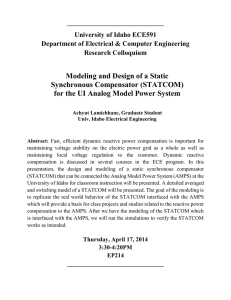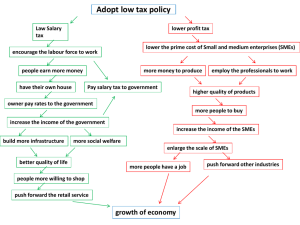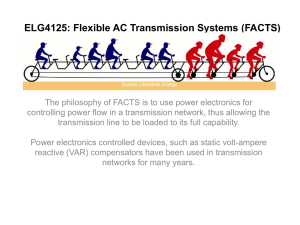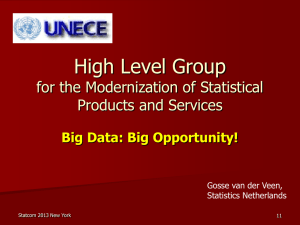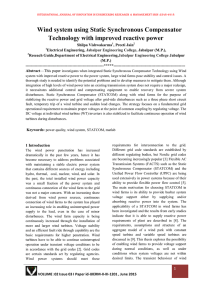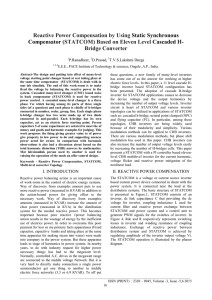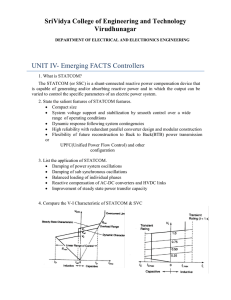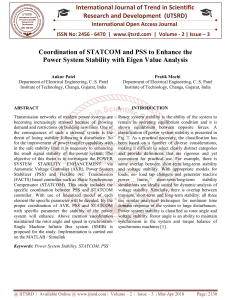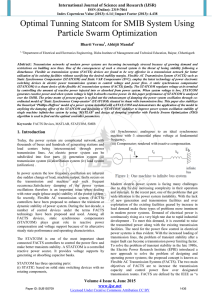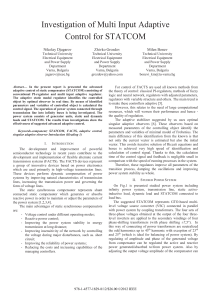controlling a static synchronous compensator with superconducting
advertisement
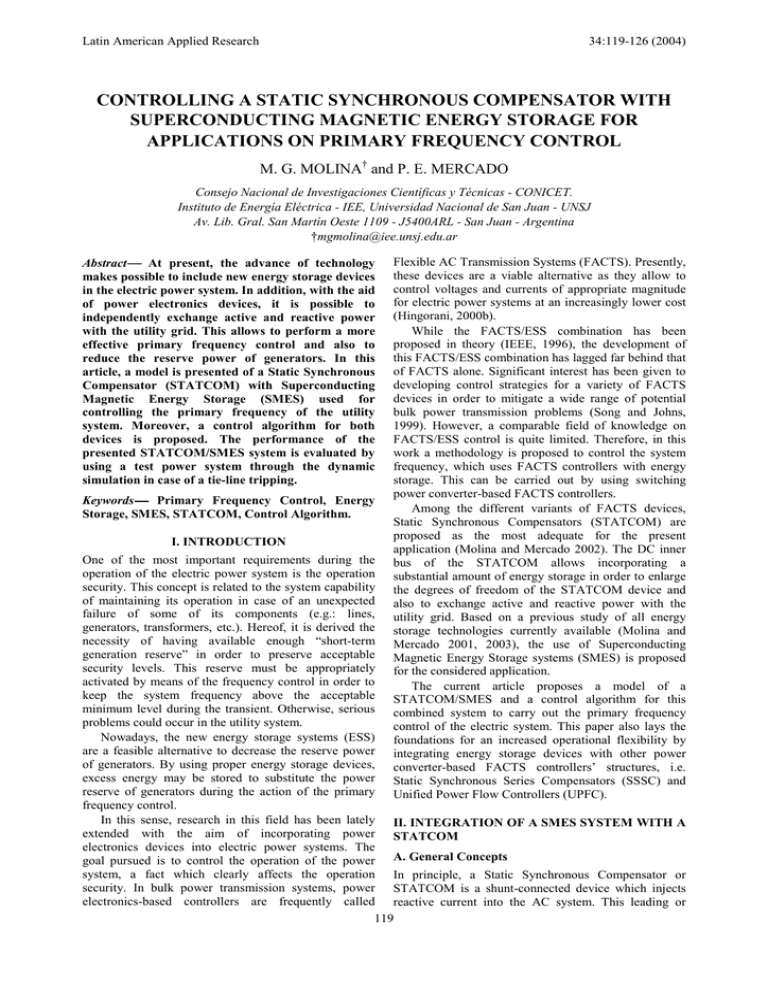
Latin American Applied Research 34:119-126 (2004) CONTROLLING A STATIC SYNCHRONOUS COMPENSATOR WITH SUPERCONDUCTING MAGNETIC ENERGY STORAGE FOR APPLICATIONS ON PRIMARY FREQUENCY CONTROL M. G. MOLINA† and P. E. MERCADO Consejo Nacional de Investigaciones Científicas y Técnicas - CONICET. Instituto de Energía Eléctrica - IEE, Universidad Nacional de San Juan - UNSJ Av. Lib. Gral. San Martín Oeste 1109 - J5400ARL - San Juan - Argentina †mgmolina@iee.unsj.edu.ar Abstract−− At present, the advance of technology makes possible to include new energy storage devices in the electric power system. In addition, with the aid of power electronics devices, it is possible to independently exchange active and reactive power with the utility grid. This allows to perform a more effective primary frequency control and also to reduce the reserve power of generators. In this article, a model is presented of a Static Synchronous Compensator (STATCOM) with Superconducting Magnetic Energy Storage (SMES) used for controlling the primary frequency of the utility system. Moreover, a control algorithm for both devices is proposed. The performance of the presented STATCOM/SMES system is evaluated by using a test power system through the dynamic simulation in case of a tie-line tripping. Keywords−− Primary Frequency Control, Energy Storage, SMES, STATCOM, Control Algorithm. I. INTRODUCTION Flexible AC Transmission Systems (FACTS). Presently, these devices are a viable alternative as they allow to control voltages and currents of appropriate magnitude for electric power systems at an increasingly lower cost (Hingorani, 2000b). While the FACTS/ESS combination has been proposed in theory (IEEE, 1996), the development of this FACTS/ESS combination has lagged far behind that of FACTS alone. Significant interest has been given to developing control strategies for a variety of FACTS devices in order to mitigate a wide range of potential bulk power transmission problems (Song and Johns, 1999). However, a comparable field of knowledge on FACTS/ESS control is quite limited. Therefore, in this work a methodology is proposed to control the system frequency, which uses FACTS controllers with energy storage. This can be carried out by using switching power converter-based FACTS controllers. Among the different variants of FACTS devices, Static Synchronous Compensators (STATCOM) are proposed as the most adequate for the present application (Molina and Mercado 2002). The DC inner bus of the STATCOM allows incorporating a substantial amount of energy storage in order to enlarge the degrees of freedom of the STATCOM device and also to exchange active and reactive power with the utility grid. Based on a previous study of all energy storage technologies currently available (Molina and Mercado 2001, 2003), the use of Superconducting Magnetic Energy Storage systems (SMES) is proposed for the considered application. The current article proposes a model of a STATCOM/SMES and a control algorithm for this combined system to carry out the primary frequency control of the electric system. This paper also lays the foundations for an increased operational flexibility by integrating energy storage devices with other power converter-based FACTS controllers’ structures, i.e. Static Synchronous Series Compensators (SSSC) and Unified Power Flow Controllers (UPFC). One of the most important requirements during the operation of the electric power system is the operation security. This concept is related to the system capability of maintaining its operation in case of an unexpected failure of some of its components (e.g.: lines, generators, transformers, etc.). Hereof, it is derived the necessity of having available enough “short-term generation reserve” in order to preserve acceptable security levels. This reserve must be appropriately activated by means of the frequency control in order to keep the system frequency above the acceptable minimum level during the transient. Otherwise, serious problems could occur in the utility system. Nowadays, the new energy storage systems (ESS) are a feasible alternative to decrease the reserve power of generators. By using proper energy storage devices, excess energy may be stored to substitute the power reserve of generators during the action of the primary frequency control. In this sense, research in this field has been lately II. INTEGRATION OF A SMES SYSTEM WITH A extended with the aim of incorporating power STATCOM electronics devices into electric power systems. The goal pursued is to control the operation of the power A. General Concepts system, a fact which clearly affects the operation In principle, a Static Synchronous Compensator or security. In bulk power transmission systems, power STATCOM is a shunt-connected device which injects electronics-based controllers are frequently called reactive current into the AC system. This leading or 119
